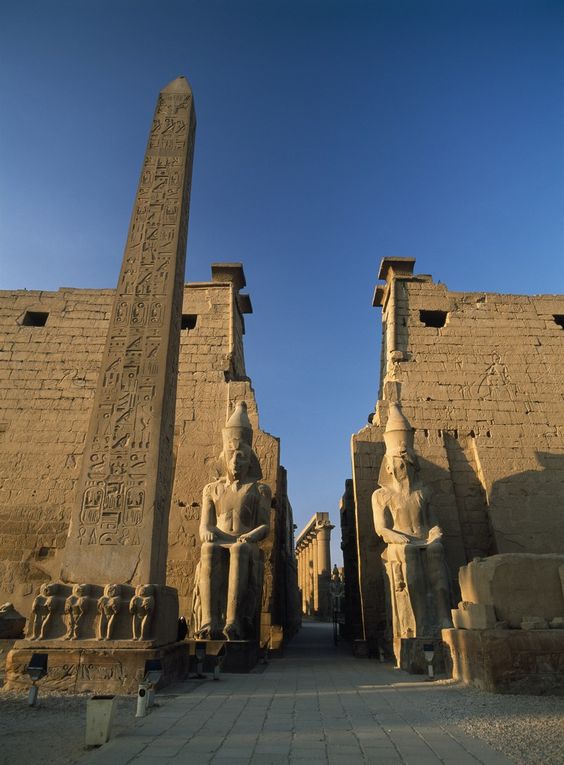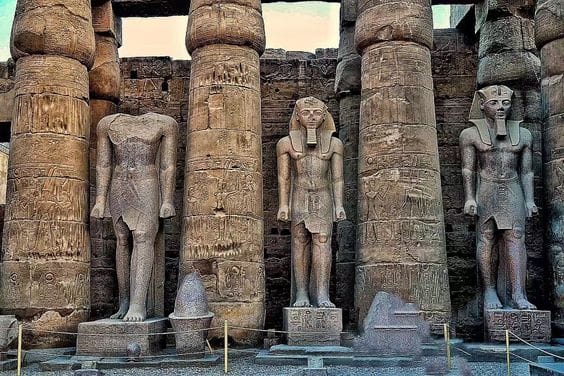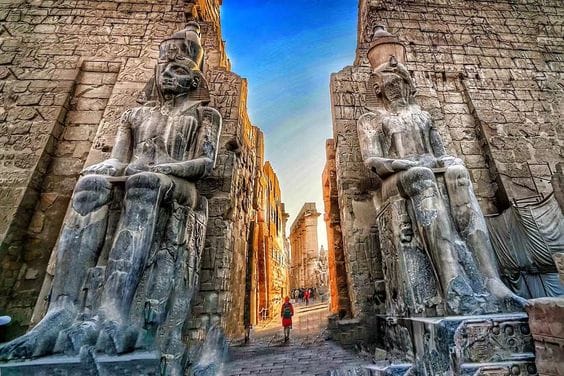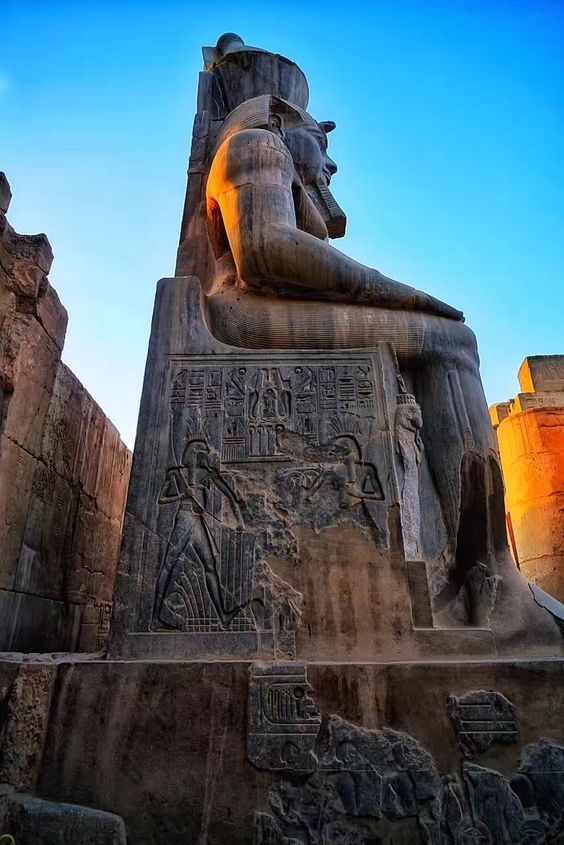Luxor Temple, one of Egypt’s most iconic and well-preserved monuments, is located on the eastern bank of the Nile River in the modern city of Luxor. This grand temple, dedicated primarily to the god Amun-Ra, was built during the reign of Amenhotep III in the New Kingdom period (around 1400 BCE) and was later expanded by other pharaohs, including Ramses II and Tutankhamun. Unlike many other Egyptian temples, Luxor Temple was not dedicated to a specific king but to the divine triad of Amun, his wife Mut, and their son Khonsu.
The purpose of the temple was to serve as a religious and ceremonial center, playing an essential role in the Opet Festival, where statues of the gods were carried from Karnak Temple to Luxor, symbolizing the unity of the king and the divine. The temple is a masterpiece of Egyptian architecture, featuring a long processional path, massive pylon gates, towering obelisks, and a series of colossal statues, all of which highlight the grandeur of ancient Egyptian design.
Today, visitors to Luxor Temple can witness its remarkable preservation, with well-maintained structures and detailed hieroglyphs that provide insight into Egypt’s spiritual life and royal history. The temple is one of Egypt’s most popular tourist attractions and offers an immersive experience into the culture and beliefs of ancient Egypt.











